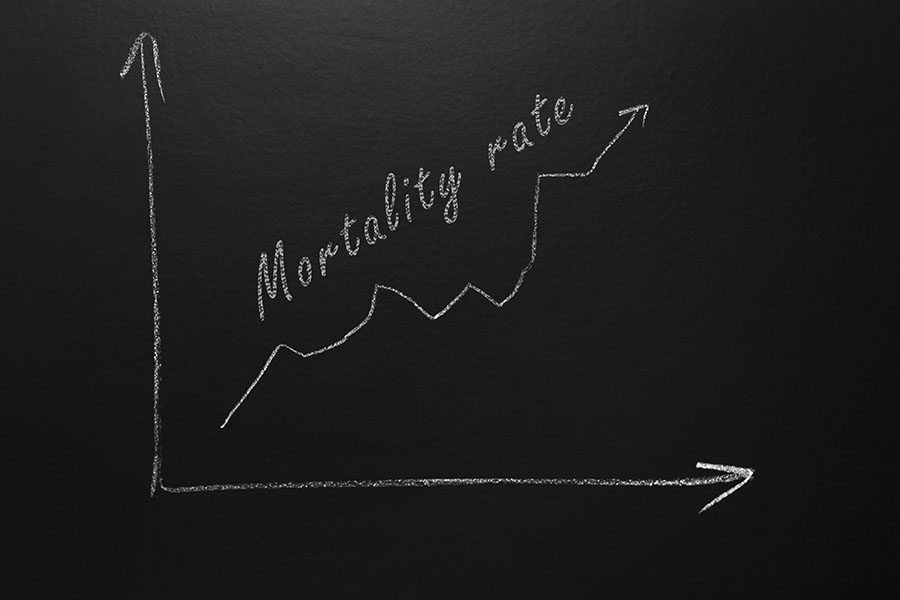Does attention deficit and hyperactivity disorder increase risk of mortality?
October 13, 2020
Background and Purpose: Few studies have explored the risk of death from Attention-Deficit/Hyperactivity Disorder, or ADHD, and existing studies have found inconsistencies and lack information on individual causes. This study investigated the relationship between ADHD and the mortality rate in Taiwan. Method: A retrospective cohort study was conducted using the national health insurance database for the entire population of Taiwan. The ADHD group included 275,980 newly diagnosed ADHD patients aged 4 to 44 years between 1 January 2000 and 31 December 2012. The patients with ADHD were compared with 1,931,860 gender- and age-matched control groups. Suicide, accidental injury, homicide, and the mortality rate of natural causes were analyzed using a Cox regression model of competitive risk adjustment, and the relationship between ADHD and individual causes was discussed. Result: During the observation period, 727 people (0.26%) died in the ADHD group as opposed to 3,594 (0.19%) in the non-ADHD group. Of the ADHD group, 546 (75.1%) were male and 2,852 (79.4%) were male in the control group. After adjusting for the potential confounders, ADHD patients had higher total-cause mortality (adjusted danger ratio 1.07; 95%CI, 1.00-1.17) than non-ADHD groups. ADHD patients also had higher mortality rates than the control group from suicide (adjusted danger ratio 2.09; 95%CI, 1.62-2.71), accidental injury (adjusted danger ratio 1.30; 95%CI, 1.10-1.52) and homicide (adjusted danger ratio 2.00; 95%CI, 1.09-3.68). The two groups had similar risk of mortality from natural causes. Conclusion: In this study, patients with ADHD had higher rates of injury-related mortality, particularly from suicide, accidental injury, and homicide. Although the risk of injury death was significantly higher in ADHD patients than in non-ADHD groups, the absolute risk of death was low due to the fact that the cases included in this study were mostly young people. Few studies have investigated the risk of death from Attention-Deficit/Hyperactivity Disorder, or ADHD, and existing studies have found inconsistencies and a lack of information on individual causes. Since ADHD originates in younger groups, the impact of ADHD on death is difficult to explore. It needs big data on individual cases and long-term tracking to find the evidences, especially if the individual causes of death (such as suicide) are also explored; in this case, sample size and tracking time must be even larger and longer. This study explored the relationship between ADHD and mortality rate in Taiwan, using the database of national health care of the entire Taiwan population for the retrospective cohort study. As far as we know, the study included the largest number of participants. So far, we have not only empirically found the evidence that ADHD would increase the overall mortality rate, but more importantly, we have discussed suicide, accidental injury, homicide, and natural causes of individual mortality rate through the analysis of big data. This study was published in a new open access journal published by JAMA network open (2019 impact factor=5.032, 19/165=11.5% in medicine general & internal) (1). The ADHD group included 275,980 newly diagnosed ADHD patients aged 4 to 44 years (figure 1) between January 1st, 2000 and December 31st, 2012. The ADHD patients were compared with 1,931,860 gender- and age-matched control groups. The association between ADHD and mortality rate was analyzed using Cox regression analysis, and controlling gender, age, rural and urban insured coverage, insured salary, outpatient visits, birth defects, intelligence deficiency, depression, autism, substance abuse, behavioral disorders, and antagonism. Suicide, accidental injury, homicide, and the mortality rate of natural causes were analyzed using a Cox regression model of competitive risk adjustment, and the relationship between ADHD and specific death cause was investigated. The mean (standard deviation) age of the ADHD group and control group was 9.61 (5.74) years old. The majority of the cases were male (ADHD group 209,406; control group was 1,465,842; men in both groups were 75.88%). A total of 4,321 cases from two cohorts died during the observation period (15.1 million person-years), while 727 (0.26%) died in the ADHD group, as opposed to 3,594 (0.19%) in the ADHD group. Of the ADHD group, 546 (75.1%) were male and 2,852 (79.4%) were male in the control group. After adjusting for potential confounders, ADHD patients had higher total-cause mortality (adjusted hazard ratio 1.07; 95%CI, 1.00-1.17) than non-ADHD groups). ADHD patients also had higher mortality than the control group from suicide (adjusted danger ratio 2.09; 95%CI, 1.62-2.71), accidental injury (adjusted hazard ratio 1.30; 95%CI, 1.10-1.52) and homicide (adjusted hazard ratio 2.00; 95%CI, 1.09-3.68). The two groups had similar risk of death from natural causes. In this study, patients with ADHD had higher rates of injury-related mortality, particularly from suicide, accidental injury, and mortality due to homicide. Although the risk of death from injury was significantly higher than in the non-ADHD group, the absolute risk of death was low due to the fact that the cases included in this study were mostly young people. Figure 1. Flow chart of data collection in this study. Source: Attention-Deficit/Hyperactivity Disorder and Mortality Risk in Taiwan | Attention Deficit/Hyperactivity Disorders | JAMA Network Open | JAMA Network Reference: CHEN V. C., CHAN H. L., WU S. I., LEE M., LU M. L., LIANG H. Y., DEWEY M. E., STEWART R., LEE C. T. Attention-Deficit/Hyperactivity Disorder and Mortality Risk in Taiwan, JAMA Netw Open 2019: 2: e198714

